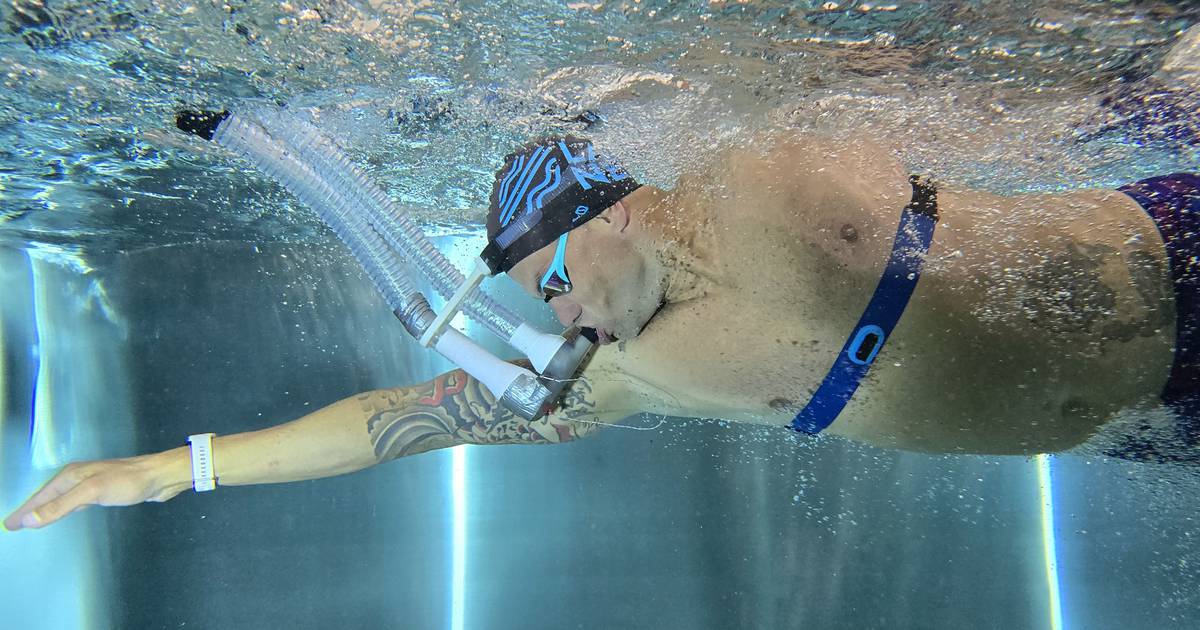As master watchmakers responsible for the precise mechanics of classic watches, scientists and engineers are today equally key in the development of smart watches. They have become so common on our hands, but we rarely think that all these advanced watches even record our steps, swimming strokes, pulse, saturation, calories burned and a bunch of other parameters that we monitor in dozens of different ways. sports.
We recently visited Huawei’s Health Lab in Helsinki. Behind the unimpressive brick building is one of the most advanced health laboratories where they are creating the foundations of wearable gadgets for years to come. After two similar centers in China, this is the latest one they built, and it was opened at the end of last year.
At first glance it looks like a large gym, but this is a carefully designed science center with equipment and real sports environments in five main areas covering more than 20 sports. The scientists who run the center quickly reveal to us that every device here has multiple purposes, so they monitor more than 200 physiological and biomechanical indicators.
And the five main areas of research are a multi-purpose treadmill, a treadmill with instruments, an open gym consisting of cardiovascular exercises, a ski simulator and a counter current pool. These two are the last and most impressive parts of the entire complex because they had to be made to order. But they did not want to reveal how much they cost.
On each of these devices, they can simulate real scenarios of some sports, from interactive ski routes to water temperature, current strength in the pool, so that athletes can optimize their performance.
And among the athletes who worked in the center was Julia Kekkonen (24), a Finnish triathlete who is training for the Olympic Games in 2028 and rode a bicycle on a special multi-purpose lane. Paraathlete Esa-Pekka Mattila also trained at the same place. In Huawei, they explain how they are currently working on the development of activity monitoring for athletes with disabilities, and Mattila is just one of the many involved in the project. Namely, the company points out that they launched these initiatives to offer more sports features for people with disabilities in wearable smart products and objects, as a sports category that currently lacks support in the consumer technology industry.
And the ski simulator will enable them to offer even more opportunities for following ski sports. Namely, the data from the simulator enables them to develop an algorithm that takes into account the specific physiological requirements of the sport, such as the engagement of the upper body and the sliding ratios of the skis.
In order to encourage the improvement of the accuracy of their products and at the same time help scientists to obtain precise results in real time, each test zone also integrates various series of Huawei Watch devices, such as the latest Huawei Watch Fit 3 or Watch GT4 and the K5 metabolism. A mask for precise determination of VO2 Max, i.e. the largest amount of oxygen that your body can use during dynamic exercise.
We were also the first journalists who could try these devices and various sensors that constantly measure various data. I tried the counter-current pool, where you fight against water with a speed of up to 4 m/s. Thanks to the sensors they collect, they can harmonize the data recorded by the watch, i.e. increase the precision of these measurements. Similarly, the treadmill located in the non-vibration room measures the various forces you create while running and power. help you run more precisely and discover that you favor one leg more.
All this data is processed by six PhDs and 20 external experts from fields that include physiology, artificial intelligence, machine learning, testing and software development. Unlike China, scientists here come from EU countries and their experience is focused on European demographics.
The new StayFit calorie tracking feature and upgraded activity rings also provide an accurate way for Huawei Health Lab users to monitor energy consumption. The application uses scientifically accurate calculation and monitoring of caloric energy consumption, and is powered by the latest Huawei TruSeenTM 5.5+ technology, which comes with improved accuracy in detecting cardiovascular statistics during dynamic activities or during sudden changes in temperature. in the environment.
Each of these and many other features and sensors found in the watch, such as the accelerometer, gyroscope, magnetometer, optical heart rate sensor and ambient light sensor, are the result of years of research and accumulated data. . This is exactly what makes Health Lab so significant, because it enables a practical way to test all algorithms. Thanks to this data and cooperation with European universities, Huawei is working on the standardization of measurements performed by watches at the European level.
And in the future, all the results that are collected will be used for further research programs. One such example is iCARE4CVD, a program that brings together the medical, technological industry and the EU, as one of the most ambitious research initiatives in the field of artificial intelligence and cardiovascular diseases. Huawei is currently the only manufacturerđač of wearable devices that participates in iCARE4CVD, using the capabilities of their wearable devices to monitor features such as physical activity, sleep quality, heart rate and breathing measurement 24 hours a day.
